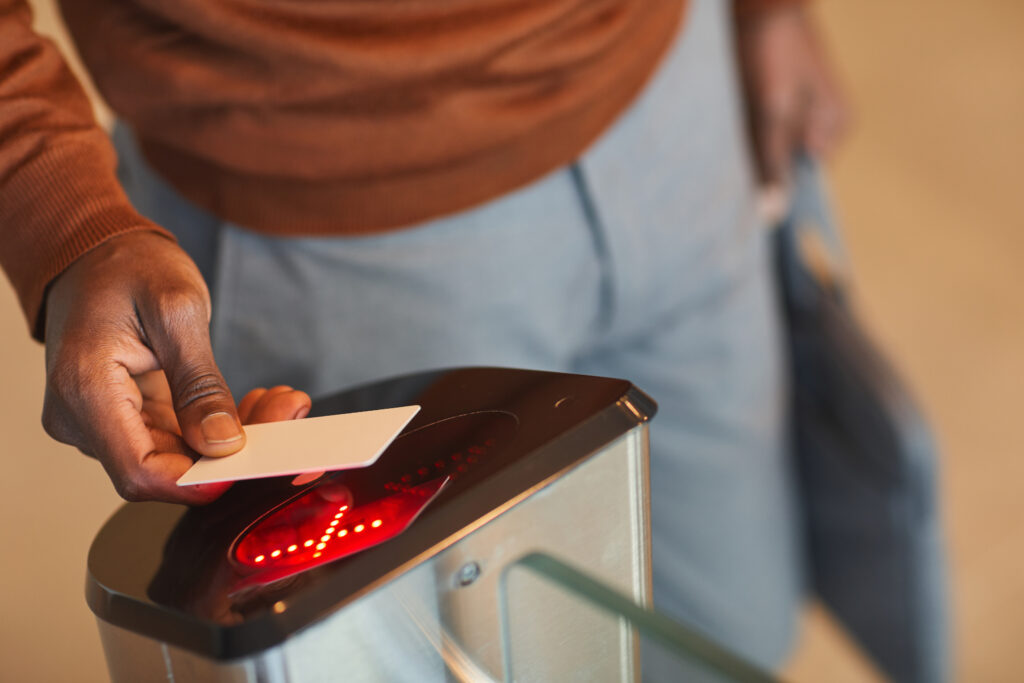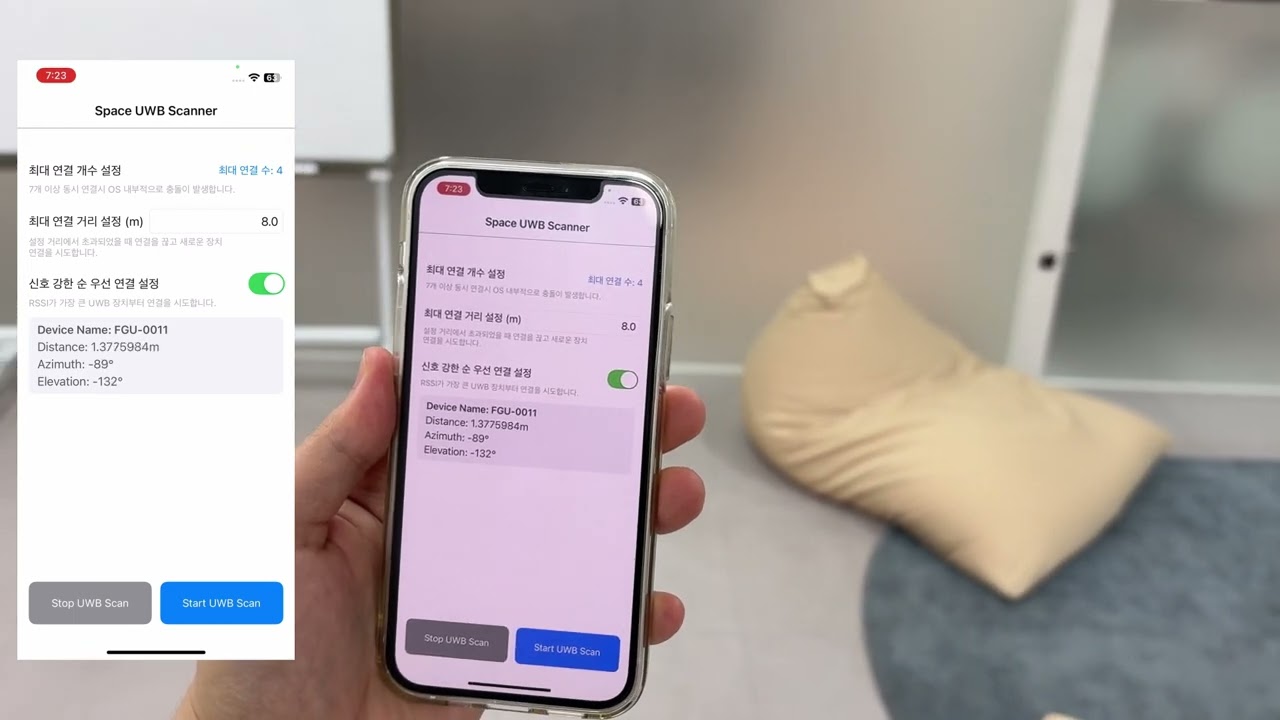RFID vs UWB: Indoor Positioning Technology Comparison & Optimal Solution Guide
Indoor positioning technology plays a key role in various industries such as logistics, security, and smart offices.
Particularly, RFID (Radio Frequency Identification) and UWB (Ultra-Wideband) are the most widely used technologies,
requiring careful consideration of their strengths and applications for appropriate selection.
So, what are the differences between RFID and UWB, and which is more suitable for different situations?
This article will explore the key differences, use cases, and optimal application environments of RFID and UWB.
Understanding the Basics of RFID and UWB
What is RFID (Radio Frequency Identification)?
RFID is a technology that detects tags using radio frequency.
Simply put, it functions like a wireless barcode, enabling reading and recording of object or personnel information via electromagnetic waves.

How RFID Works
A reader transmits radio waves, which are detected by an RFID tag that then sends back unique data to the reader.
For example, the principle behind subway transportation cards enabling access is based on RFID technology.
Key Features of RFID
- Wireless data transmission – Allows reading and writing tag information without physical contact
- Supports both passive and active tags
- Passive tags require no battery
- Active tags enable long-range detection
- Detection range – Passive RFID (a few cm to 10m), Active RFID (up to 100m)
- Multiple tag recognition – Can scan hundreds of tags simultaneously
- Main applications – Access control, logistics & distribution, NFC payment, library, and warehouse management
👉 For more details, check out What is an RFID System?
What is UWB (Ultra-Wideband)?
UWB is a technology that utilizes ultra-wideband signals to measure positions with high precision.
Simply put, it functions like an indoor GPS.

How UWB Works
UWB transmits very short pulses and calculates signal arrival time.
This enables precise positioning with an accuracy of a few centimeters.
Key Features of UWB
- Ultra-precise positioning – 10 to 30 cm accuracy
- Time of Flight (TOF) Calculation – Enables real-time distance measurement
- Detection range – 10m to 100m (varies by environment)
- Main applications – Real-time location tracking (RTLS), security systems, healthcare facilities, sports analytics
👉 For more details, check out What is UWB Technology?
RFID vs UWB Comparison Analysis
| Category | RFID | UWB |
|---|---|---|
| Operating Principle | Detecting tags using electromagnetic waves | Calculating distance using ultra-wideband signal pulses |
| Tracking Method | Close-range detection | Precise distance and location measurement |
| Accuracy (Margin of Error) | Around 1–5m | Around 10–30cm |
| Tag Cost | Inexpensive (a few cents to a few dollars) | Relatively expensive (a few dollars to tens of dollars) |
| Power Consumption | Passive RFID: No battery required | Battery required (high power consumption) |
| Range | Passive RFID: Under 10m, Active RFID: Around 100m | 10m to 100m |
| Multiple Tag Recognition | Can scan over 100 tags simultaneously | Supports simultaneous recognition but performs lower than RFID |
| Main Applications | Logistics, access control, NFC payment | Real-time location tracking, security systems, medical facilities |
RFID vs UWB – Which Technology Should You Choose?
RFID and UWB are technologies where the optimal choice varies depending on the purpose.
The table below compares which technology is more suitable for various industries and environments.
| Use Case | Recommended RFID | Recommended UWB |
|---|---|---|
| Access Control | ✔ General access control | ✔ When high-precision tracking is required |
| Asset/Inventory Management | ✔ Low cost, supports bulk processing | ✔ When precise real-time location tracking is needed |
| Logistics/Delivery | ✔ Efficient for large-scale logistics centers | ✔ Precise location tracking of specific products/pallets |
| Sports Analysis | ❌ | ✔ Can analyze player movement distance and speed |
| Hospitals/Medical Facilities | ✔ Patient access detection and medical equipment tracking | ✔ Real-time tracking of patient movement and equipment usage |
| Military/Security Systems | ❌ | ✔ Precision surveillance and restricted area access control |
| Smart Offices | ✔ RFID card access system | ✔ Real-time employee location analysis and smart environment control |
RFID and UWB Should Be Chosen Based on Use Cases
Since RFID and UWB have different strengths and use cases, choosing the appropriate technology based on business needs is more important than simple comparison.
- RFID is a cost-effective solution ideal for bulk data processing or environments where moderate accuracy is sufficient.
- UWB excels in real-time location tracking (RTLS) requiring high precision, making it the best choice for centimeter-level accuracy positioning.
✔️Technology Selection Guide
If Cost is a Priority → Choose RFID
- Ideal for logistics warehouses, access control systems requiring large-scale product or personnel management
- Easy compatibility with NFC and existing systems
If Precise Real-Time Tracking is Required → Choose UWB
- Used in environments requiring precise location data, such as hospitals, sports analytics, and smart offices
- Can be integrated with real-time location-based automation systems
Conclusion: RFID vs UWB, What is the Best Choice?
✔ RFID is a low-cost and high-capacity processing solution, ideal for logistics and access control.
✔ UWB excels in environments where accuracy is crucial, making it the optimal choice for security, sports analytics, and healthcare facilities requiring real-time tracking.
Looking for the Right Indoor Positioning Solution for Your Business?
GrowSpace provides RFID & UWB-based smart solutions,
offering customized location tracking systems tailored to your environment.

